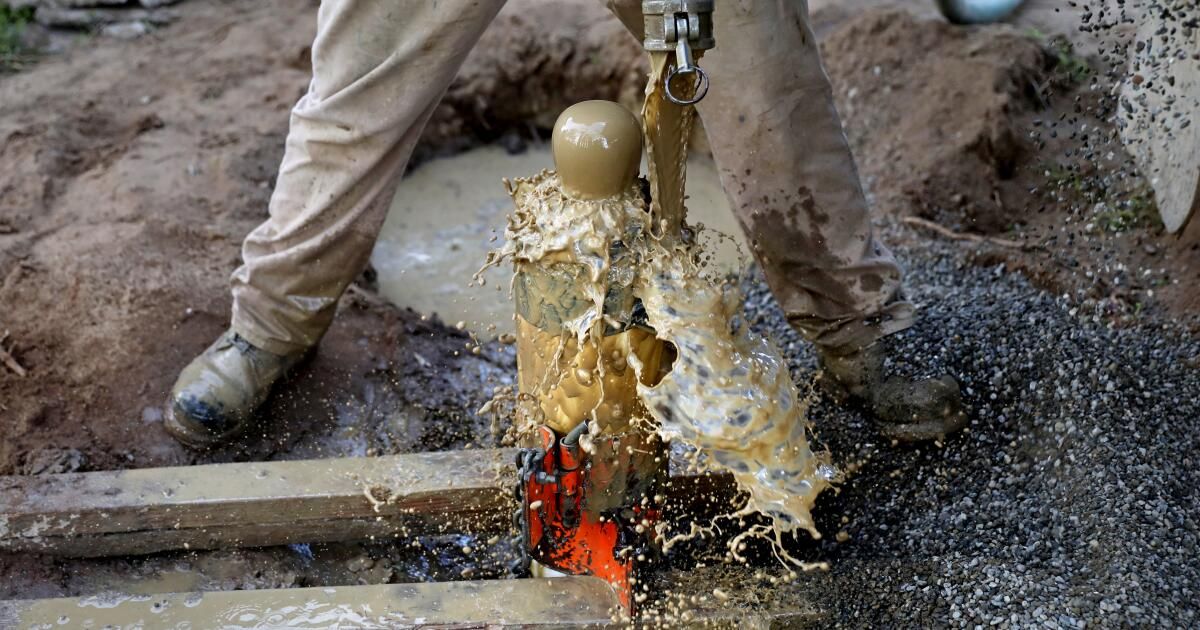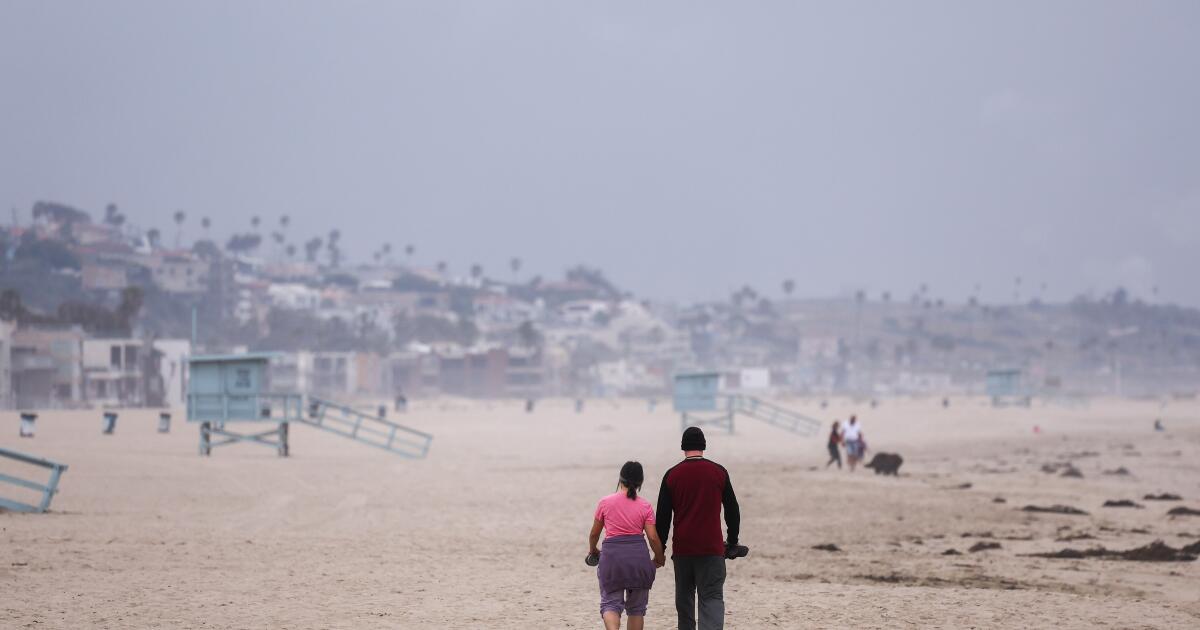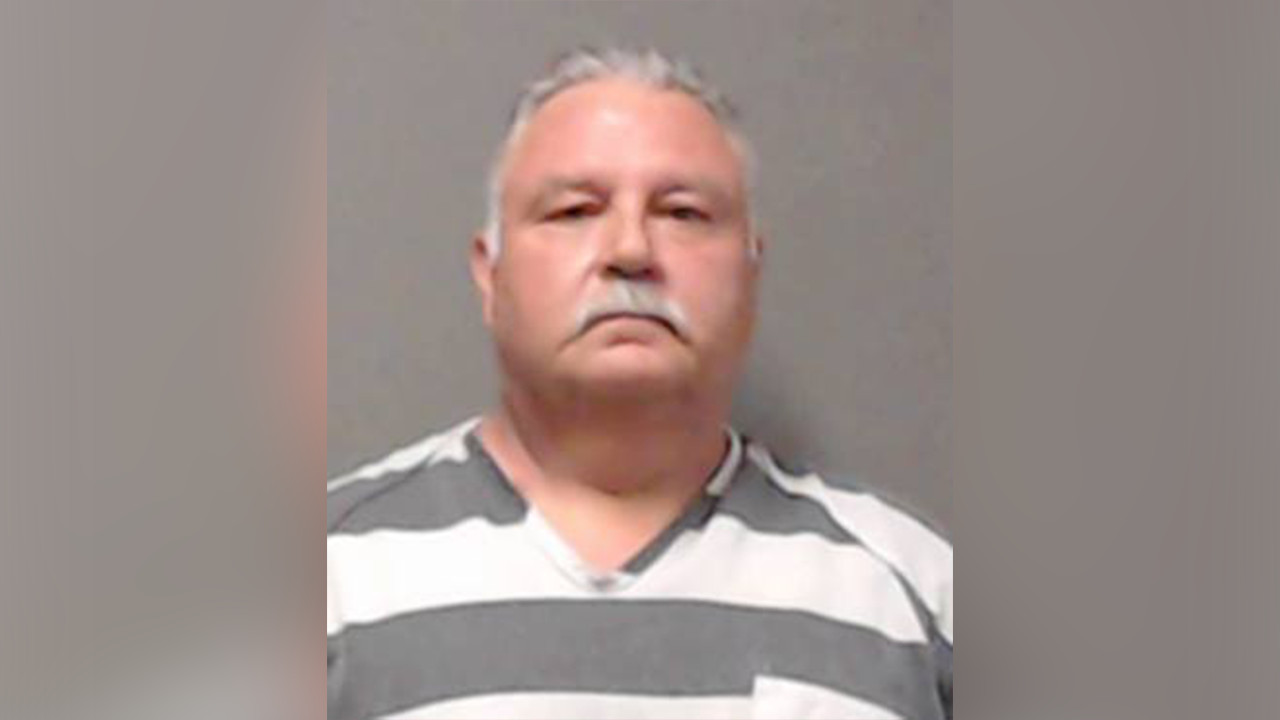In recent years, California water managers have seen a pattern emerge in agricultural areas of the Central Valley: Even as declining groundwater levels have left thousands of residents with dry wells and caused soil to hunda, counties have continued to issue permits to agricultural landowners. to drill new wells and pump even more water.
A bill sponsored by the California Department of Water Resources sought to address these problems by prohibiting new high-capacity wells within a quarter-mile of a drinking water well or in areas where land has subsided due to excessive pumping.
Despite support from Gov. Gavin Newsom's administration, the measure was narrowly defeated in the Senate last week after encountering opposition from the agriculture industry, business groups, local governments and water agencies.
Aggressive and impactful reporting on climate change, the environment, health and science.
Opposing organizations, which included the California Chamber of Commerce, the California Farm Bureau Federation and more than 30 other groups representing producers and water suppliers, said the bill was “overly restrictive and could prevent forms of achieve groundwater sustainability.”
Kristopher Anderson, legislative advocate for the Association. of California Water Agencies, told a Senate committee that the legislation would impose unworkable mandates and would be “a blanket moratorium for everyone on approving new wells that will harm local economies and will not address these problems.”
After a brief debate, members of the Senate Water and Natural Resources Committee rejected the bill in a 5-4 vote.
Assemblyman Steve Bennett (D-Ventura), who introduced the bill, said its goal was to address a major loophole in California's groundwater law. The Sustainable Groundwater Management Law, approved in 2014, created local agencies He was tasked with developing plans to curb overpumping in many areas of the state, but left counties in charge of issuing permits for new wells.
That has led to a situation where there are “more straws coming in as they try to regulate the current straws,” he said.
In some rural communities, farmworkers and other residents have seen their wells run dry shortly after farmers drilled new wells to irrigate crops in nearby fields.
“Too many counties have been unwilling to protect the most vulnerable people's wells because they don't want to take on the most powerful people, who want to continue putting in high-capacity wells,” Bennett said. “We've been trying to get people to do something about it and they refuse. It is the responsibility of the State to finally say, enough is enough.”
Some parts of California have some of the faster rates of groundwater depletion in the world, and things got worse during the last drought.
Scientists have also discovered that Crop water demands are increasing in the San Joaquin Valley due to rising temperatures driven by climate change, which is worsening long-term water deficits.
In parts of the valley, falling water levels have caused the ground to sink at a rate of more than half a foot per year. The subsidence of the land has required expensive repairs of dams, canals and other infrastructure, and public bodies foot the bill.
“The counties that are approving the highest capacity wells are the ones that have the most ground subsidence in California,” Bennett said, referring to counties like Tulare, Fresno and Kern. “It just doesn't make sense for us to continue putting more (hundreds of new high-capacity wells) in areas that have significant ground subsidence.”
Bennett has introduced similar legislation three times. He said the bill's defeat this year means “the status quo will reign,” allowing more wells to be drilled as land subsidence continues and water levels drop.
“Many families, particularly in the Central Valley, will have their wells run dry because we refuse to take action,” he said.
The legislation was designed to impose permanent requirements similar to the temporary 2022 ones. drought order issued by Newsom, which required counties and cities to obtain verification from a local groundwater agency that allowing a new well would not be “inconsistent” with local plans. The order also required agencies to issue a permit only after determining that additional pumping would likely not interfere with nearby wells or cause subsidence that would damage infrastructure.
In a recent report In analyzing the effects of Newsom's executive order, the Department of Water Resources said local agencies “took many approaches to gather relevant information about whether the issuance of a well permit could potentially interfere with nearby wells or contribute to the sinking of wells.” the earth”.
But the report also concluded that the continued issuance of permits for wells in vulnerable areas, where other wells are at risk and the ground has been sinking, indicates that in many respects the executive order “failed to achieve its objective.”
The report says residents in parts of Fresno, Madera and Tulare counties told state officials they are concerned that drilling more agricultural wells is putting their drinking water at risk, and that pumping for farms “has had priority over domestic well users.
Based on the goals of the governor's order, state officials decided to sponsor legislation that would give strong direction to local agencies.
The bill was supported by leaders of advocacy groups such as the Community Water Center and Clean Water Action, who argued in a letter that as the situation stands, local agencies responsible for groundwater management have no power to prevent the drilling of new wells, resulting in an “unregulated race to the bottom.”
Among those who spoke in favor of the bill during the Senate hearing was Paul Gosselin, deputy director of sustainable water management at the Department of Water Resources. He noted that more than 3,000 domestic wells have gone dry across California since 2020, according to reports filed with the state.
“Over the years, those subsidence and dry well rates,” he said, have been “increasing to new historic levels.”
He noted that during last year's floods, the state was forced to spend millions of dollars raising the dam that protects the city of Corcoran because the land has subsided dramatically.
“It is not a hypothetical problem that we have. “It’s a real-world problem that people are facing,” Gosselin told senators.
Gosselin called it a “drought resilience bill” intended to complement the Sustainable Groundwater Management Act. That law required local agencies in many areas to develop groundwater plans and curb excessive pumping by 2040.
There were several exemptions in the bill, such as allowing drilling of a replacement well and easing the prohibition on drilling within a quarter mile of a national well if there is a local ordinance intended to prevent new wells from interfering with existing wells. existing. .
But this was not enough to convince the opponents. Fresno County Supervisors called the bill an “attempt to fundamentally redirect groundwater management” from the original intent of the state law. A group of local agency managers called the California Groundwater Coalition He said the proposal would add “burdensome requirements.”
Gosselin said the debate over the legislation generated a “good exchange of ideas.”
“The votes weren't there to keep the bill going,” he said. “We hope that the dialogue and the issues we raised in the legislation will continue.”
The Department of Water Resources continues other related efforts, including working with local agencies on drought plans and preparing a document outlining “best management practices” to curb subsidence, he said.
Gosselin said state officials will continue to work with counties and local groundwater sustainability agencies to improve decisions on issuing permits for new wells to “hopefully avoid this continued cycle of increasing dry wells during periods of drought.” “.
Experts shared different opinions on the legislation.
“I think it's critically important,” said Jay Famiglietti, a hydrologist and professor at Arizona State University's School of Sustainability. Without this type of legislative change, he said, “deep wells that pump out an enormous amount of water are allowed to continue to be drilled.”
“So, in addition to sustainability being at risk, we will see more and more shallow wells go dry,” Famiglietti said.
Behind the opposition to the bill, Famiglietti said there appears to be a “concerted effort” to drill more wells and delay restrictions. He described the opposition from the agricultural sector as short-sighted.
“The State cannot achieve its sustainability goals without the leadership of the agricultural industry,” he said. “We want food sustainability and we need that water to grow food for generations to come.”
A pair of agricultural groups, the Community Alliance with Family Farmers and the California Agriculture and Climate Network, supported the bill.
Ruth Dahlquist-Willard, interim director of the Sustainable Agriculture Education and Research Program at the University of California, said some kind of policy intervention is needed, but “this kind of 'one-size-fits-all' approach generally hurts small farms, “who have fewer resources to adapt to new policies and overcome additional regulatory obstacles.”
If a well goes dry on a small farm, under the bill that farm would be treated the same as a large corporation or hedge fund when trying to replace the well, he said.
Dahlquist-Willard said she hopes that if similar legislation is proposed again, it will include protections for small farms.












